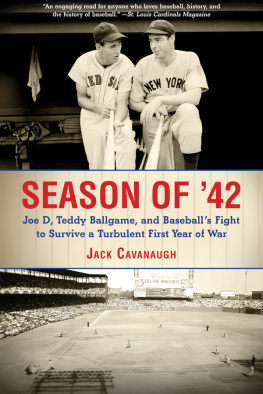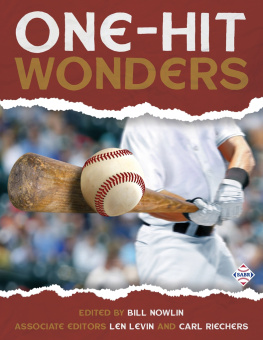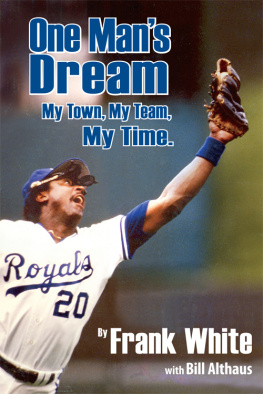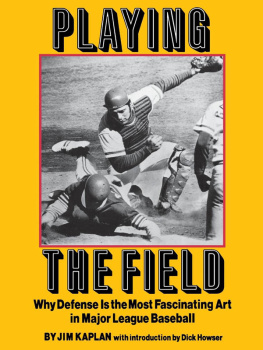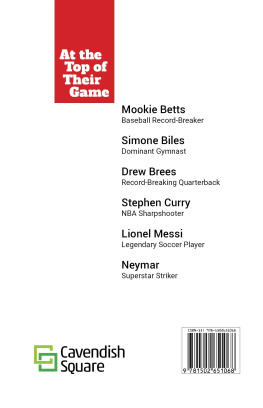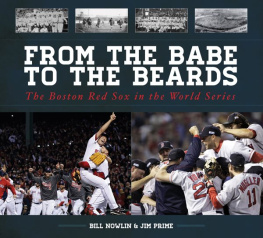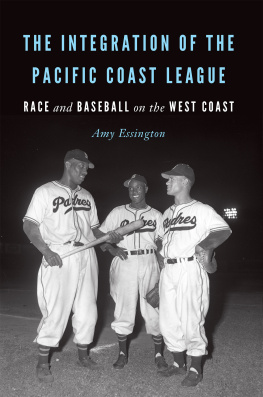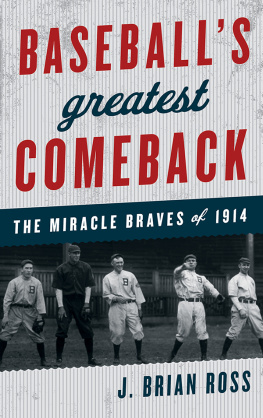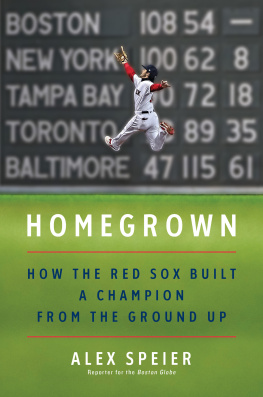

Copyright 2019 by Jim Prime and Bill Nowlin
All rights reserved. No part of this book may be reproduced in any manner without the express written consent of the publisher, except in the case of brief excerpts in critical reviews or articles. All inquiries should be addressed to Sports Publishing, 307 West 36th Street, 11th Floor, New York, NY 10018.
Sports Publishing books may be purchased in bulk at special discounts for sales promotion, corporate gifts, fund-raising, or educational purposes. Special editions can also be created to specifications. For details, contact the Special Sales Department, Sports Publishing, 307 West 36th Street, 11th Floor, New York, NY 10018 or .
Sports Publishing is a registered trademark of Skyhorse Publishing, Inc., a Delaware corporation.
Visit our website at www.sportspubbooks.com.
10 9 8 7 6 5 4 3 2 1
Library of Congress Cataloging-in-Publication Data is available on file.
Cover design by Tom Lau
Cover photo credit Getty Images
ISBN: 978-1-68358-338-7
Ebook ISBN: 978-1-68358-339-4
Printed in the United States of America
I dedicate this book to the 400-plus members of the Bluenose Bosox Brotherhood, an eclectic and informed group of Red Sox fans that recognizes no borders except foul lines, baselines, and outfield fences.
Jim Prime
Dedicated to Red Sox fans worldwide. This has been quite a run, these past 15 years, hasnt it?
Bill Nowlin
Contents
Foreword by Fred Lynn
For much of the 1970s, the Boston Red Sox trio of Jim Rice, Fred Lynn, and Dwight Evans comprised the best outfield in baseball. Many Red Sox historians and longtime fans also consider it the best outfield in Red Sox history. Center fielder Fred Lynn, former collegiate star at the University of Southern California, was the anchor of that outfield. The stylish left-hander exploded onto the major-league scene in 1975 along with fellow Gold Dust Twin Jim Rice.
He had a smooth, sweet swing and a presence in the outfield that reminded many of the great DiMaggioDom or Joe, take your pick. In his debut season, the 6-foot-1, 185-pound Lynn captured Rookie-of-the Year honors, was named American League MVP, and won a Gold Glove for his play in center field. He won three more Gold Gloves during his time in Boston and led the American League in batting in 1979 with a .333 average. Lynn was named to the American League All-Star team every season from 1975 to 1980. For the Sox, he batted .308 with 124 homers before moving on to the California Angels.
Who better to critique the current Red Sox outfield of Andrew Benintendi, Jackie Bradley Jr., and Mookie Betts than this legend, one of the most popular players ever to perform at Fenway? In this foreword and throughout the book, Lynn provides insights into his own Red Sox experience and offers a position-by-position commentary on the offensive and defensive strengths of his own classic outfieldand how they match up with the young challengers known as the Killer Bs.
W e call it the Big Stage, playing in New York, Philly, LA, and Boston. Some guys can play on the Big Stage and some cant. The Red Sox outfield of Andrew Benintendi, Jackie Bradley Jr., and Mookie Betts belong on the Big Stage.
There are similarities between the Jim Rice-Fred Lynn-Dwight Evans outfield of the 1970s and the Killer Bs. We all arrived in the major leagues within a few years of each other and quickly became cohesive units. Like Jackie Jr., my counterpart in center field, Id come from the college ranks. In fact, we are both USC alumnifor me, that stands for the University of Southern California; for him, the University of South Carolina. In left field, Benintendi is a compact, left-handed version of Jimmie. Hes smaller, shorter, but hes got little Popeye arms, too. Hes got some sock and hes got a short, compact swingand he can go the other way pretty well. And in right field, both Dewey and Mookie can track down everything and get the ball back to the infield in a hurry. Both outfields had great confidence in their abilities and knew they could play in the majors from day one.
All three of the Killer Bs are well-grounded. They come from good families that will make sure they stay that way. It looks like they do things together away from the ballpark, which is really nice to see. Two of them were college players and all three have handled the media extremely well. When I played, the Boston media used to be tough, but the Red Sox have now won four World Series in this century, one of which these three guys helped make happen so the pressure is now off. The pressure now is to repeat, but thats not the same thing as the pressure to win the first time. I mean, thats totally different.
Our games in the 70s were life and death every day. When we played the Yankees, thered be 50 reporters in the locker room, either in New York or in Boston. You couldnt even get in there, there were so many. In Boston, I learned you speak when youre spoken to by the media and thats it. Dont volunteer anything. The middle 70s in Boston were some pretty tough times for the city. The pressure was ratcheted up. It was intense, like the cities themselves. Busing was a huge issue at that time and it was a rougher town, with places like the Combat Zone. It was a little sketchy going into that neighborhood. Nowadays that area almost looks like Disneyland to me compared to what it was then. Different times.
These guys dont feel the same kind of pressures today. They shouldnt, anyway. Theyve done it. Theyve won. Everybodys looking to knock them off now. People have to go through them to win the title.
Defensively, the biggest commonality about these guys is that all three can play center field. It gives them great flexibility, and to be honest its a big advantage. If one center fielder goes down and cant play, they can fill it with a guy from either flank. Thats a luxury we didnt have when we played together. I could play center, but with Jimmie and Dwight, that wasnt going to happen.
These three all have speed and thats why they can all play center. If youre going to compare the two outfields, thats where they are ahead of us: speed across the entire outfield. A pitchers best friend is a fast outfield, so the Red Sox pitchers must love these guys. It certainly helps them at Fenway, but it really helps them on the road where you get more symmetrical ballparks and speed is definitely in play.
As far as their overall defensive ability is concerned, oh boy! Youve got two Gold Glovers in Betts and Bradley, and Benny was in the running for one in 2018 as well, so that speaks volumes. Jimmie, Dewey, and I played really well as a unit. We moved like we were playing zone defense in football. We moved as a unit1, 2, and 3. We all knew where each other was going to be, we all knew the responsibilities, and thats why we never ran into each other. We never fouled up, and Im assuming these guys have that same kind of communication.
Its a little bit different from when we played because there were no analytics involved back then. Basically, I was in charge of positioning the guys because I had the best view. Say were playing against Wade Boggs and Im going to play in left-center and move Jimmie toward the line, Ive got to bring Dwight over with me. If I move 20 feet, Ive got to move Dwight 20 feet in order to cover that gap. So basically, were daring him to hit the ball down the right-field line, which he doesnt want to do. So, you try to position yourself where hes going to hit the ball and if he stings one, were going to get it. Try to make him do something he doesnt want to do.
Next page



